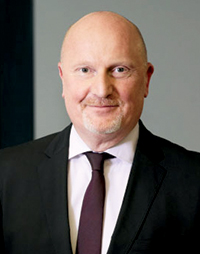
LUFTHANSA’S new Queen of the Skies, the Boeing 747-8 Intercontinental began its long-haul services from Frankfurt to Washington in June earlier this year. Since then, the new aircraft has been launched on other routes including Los Angeles, Chicago, New Delhi and Bangalore with further expansion plans as Lufthansa takes delivery of the remaining 20 Boeing 747-8s up until 2015.
The aircraft’s newly developed long-haul aircraft offers its passengers an exclusive travel experience in the comforts of a brand new Business Class. Characterised by lower noise emissions, lower fuel consumption and significantly reduced CO2 emissions, the Boeing 747-8I offers its guests maximum comfort with sustainability.
While Business passengers can experience new seats which intuitive adjustment features, additional storage space and an individual entertainment system with much larger, 15-inch screens while for the first time, First Class passengers will be seated in the front section of the main deck, the quietest part of the aircraft on seats can be converted into a lie-flat bed, 2.07 m long and 80 cms wide.
TTN’s Mark Lazelle who was on board their recent flight to Washington spoke to Carsten Schaeffer, vice president sales and services Southeast Europe, Africa and Middle East for Lufthansa about the airline’s growth plans for the Middle East.
What are Lufthansa’s main regional growth markets?
In Saudi Arabia we plan to add frequencies and capacity. Munich-Riyadh-Jeddah will be upgraded to a daily service from three times a week at present. We will also upgrade Dammam – currently served by a 737-800 Business Jet - to a wide body once an aircraft is available.
 |
|
The Boeing 747-8I First Class suites offer new levels of comfort while flying. |
Iraq and Libya also have significant potential.
What is the airline’s regional growth strategy?
The prerequisites for a flourishing business are stability, security and infrastructure, which the GCC has.
Typically Lufthansa adopts a phased approach to growth. In the Middle East we tend initially to tag a new destination onto an existing destination from our main Frankfurt hub. This new destination is then developed in its own right with a mid-term strategy to serve it non-stop from Frankfurt.
Then if demand dictates we use a bigger aircraft to serve the route, after which we look to serve the destination from our second hub at Munich.
An example of tagging is the Muscat/Abu Dhabi combination, which are leisure-and business-driven respectively.
What are the principal challenges facing Lufthansa?
When I started with Lufthansa in 1981, Swissair was the industry icon. They did everything right. Then British Airways was the icon. Today it is the GCC carriers.
While GCC governments see the aviation industry as spearheading [economic] development, European governments consider it a cash cow. In Germany, one of the world’s key exporters, aviation should be very close to the government’s heart. Instead, we must pay close attention to areas such as capacity planning to maintain profitability.
While high capacity growth from Gulf carriers is a key challenge, so are aviation taxes and emissions trading. We sometimes feel we are subjected to new taxes and other burdens almost every day, putting us at a disadvantage.
That said, the Lufthansa Group just posted a surprisingly high third quarter profit, which we believe was helped by our balanced and diversified group structure.
How do regional political developments impact Lufthansa?
There are always crises somewhere in the world. You simply learn to adjust to them. Our flight patterns to the Middle East often depend on stability and safety on the ground. We don’t want crews to overnight in unsafe places, so we change routings sometimes. Right now we are keeping a close eye on developments in Iran, Lebanon and Egypt in particular.
Lufthansa has been serving Tehran for 56 years but while we want to stay in that market we currently face restrictions on getting money out.
On the other hand [as an airline] we are fortunate we have assets which can be repositioned as required. Also, Lufthansa owns rather than leases its fleet. So if we have to reduce capacity and ground part of the fleet costs don’t kill us.
Would Lufthansa consider a strategic alliance with a GCC carrier?
Lufthansa has been spearheading alliance development for 15 years as a co-founder of the Star Alliance, and we have developed the model from code share to various types of joint venture and frequent flyer co-operation.
It is a simple equation – an alliance must be a win-win. What additional benefits would a GCC partner bring to the table? And what of the other Star Alliance partners? Every member has a vote, and everybody has to believe in the benefit of additional alliance partners.
We are also aware of the complexity of integrating a new carrier - and the associated costs - into a partnership network.
What new product or services can Middle East passengers expect from Lufthansa going forward?
We are rolling out the new First and Business Class cabins, which are already available on the Dubai-Munich route. We expect further fit-outs during the winter period.
Why is Lufthansa investing so heavily on premium product?
If you operate out of Germany, a high cost country, you need certain yields to maintain profitability.
In 2011, 50 per cent of our long-haul revenues came from premium cabins, so a lot of our corporate thinking is geared towards this market. However this does not mean we are not catering to the non-premium traveller, given that about 30 per cent of our corporate business uses Economy Class.
